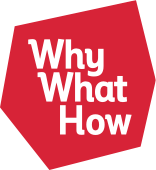30 no-brainer strategies to get maximum value from your next business Conference
People everywhere.
Long coffee queues.
PowerPoint overload.
Bags filled with unwanted brochures, pens, stress balls and marketing gimmicks.
The joy of the business conference!
Something I’m painfully familiar with. As are you most likely, if you’re reading this article. It’s easy to see conferences as events to be endured at least as much as enjoyed.
But it really doesn’t need to be that way.
I admit I’m a bit of a strategy geek, but I learned a long time ago that strategy isn’t just about the big picture. It can (and should) be about the little things as well.
So, to prove that point, and to significantly improve your next conference experience, here are some simple, practical strategies that I’ve found can make a real difference:
Mentally prepare
- Adopt a positive mindset – don’t be ho-hum. See the conference content as personally and professionally valuable, not just to you, but also to your organisation. And embrace the networking element as an opportunity for professional growth and business development.
- Set realistic and credible goals – ask yourself what you want to get out of the conference. You’ll need to be able to justify the time and expense involved. Having clear goals provides the foundation for every other key decision you’ll make before and during the event.
Plan your content exposure
- Choose sessions carefully – each session you plan to attend should satisfy a content goal (you’ll learn something new) or a relationship goal, (you’ll want to meet or support a presenter or panellist or another member of the audience). If it doesn’t, don’t go!
- Don’t try to see everything – Check the conference agenda well in advance and pre-rate sessions as ‘essential,’ ‘optional’ or ‘no thanks.’ Avoid session content you could easily get by reading a book or paper, or on a website or YouTube. Get a friend or colleague to attend and share notes if you have two ‘essential’ sessions at the same time.
- Plan time-out – make sure you leave some free time available during conference sessions. Networking, visiting the trade exhibition and planned down-time shouldn’t be left totally to the scheduled breaks between sessions.
Develop your networking strategy
- Pre-introduce yourself – don’t wait until you arrive. Try to find out who’s attending and create a priority list of people you’d like to meet. Use email, LinkedIn or a mutual contact to introduce yourself before the event and, if possible, to pre-arrange a meeting time. If they are presenting, let them know you’ll be at their session to support them.
- Contribute or participate – the best way to meet people is to have them come to you. Submit a paper, panel session idea, or workshop proposal. Or volunteer to act as a session moderator or panel chair.
Manage the logistics
- Be prepared – most bad conference experiences happen because of problems unrelated to the conference sessions and events. Obviously you’ll need to plan travel and accommodation, but thoroughly plan and prepare everything else as well, to ensure you’re on top of the many other details that can make or break your experience.
- Bring the right stuff – any business travel requires an array of relevant gear if you’re going to stay connected, productive and stress-free, and conferences are no exception. Make sure you have your necessary devices (phone, tablet, laptop) and their chargers. Business cards, brochures and display materials might also be relevant. If travelling overseas, pack appropriate clothing, and a local power adaptor if necessary. Make a comprehensive list and check it off before you leave home.
- Set your email to ‘out-of-office’ – plan to limit your email activity so you can focus on conference sessions and networking. But make sure your colleagues, customers and contacts know they might not hear from you for a few days, and why.
- Get familiar with the venue and location – orient yourself beforehand to all the places you expect to be during the conference. Find and study venue maps, check out relevant travel and transport information and copy it all onto your phone or tablet for ready reference. Getting lost or being late can be a major waste of your time!
Switch on from the moment you arrive
- Register early – minimise your time in queues so you can maximize your time learning and meeting people. Be sure to check that all your registration details match what you were expecting.
- Get in quick for tours, workshops and ‘special’ sessions – where numbers are limited for any special or optional activity, sign up quickly so you don’t miss out.
Participate in sessions strategically
- Attend the keynotes – they provide lots of gems you can use to start conversations and enhance your credibility when meeting people at other times during the conference.
- Plan to bail – if you’re not reasonably certain you’ll get value from a session, sit towards the rear or on an aisle. Give it 15 minutes and if you’re not fully interested and engaged, leave. Try another presentation if there are concurrent sessions, use the time for networking or the trade exhibition, or just take a stroll and have some ‘me-time.’
- Plan not to bail – if you are committed to seeing the whole session, sit towards the front where presenters and panel members will see you. Ask questions and introduce yourself at the end of the session, even if just to say you enjoyed it – then you can have a deeper conversation at a later social event or tea-break.
- Say hi to your neighbour – sit next to someone you don’t know, and introduce yourself before the session starts. It’s amazing how many chance encounters of this kind can be the beginning of a more long term and productive relationship.
Network with intent
- Network on your terms – not everyone is good at or enjoys one-on-one networking. Do it your way. Arrange to meet over coffee, or pair up with a friend, colleague or co-worker.
- More listening, less talking – when engaging with someone you want to impress, don’t keep telling them how brilliant you are, but allow them to ‘shine.’ They’ll enjoy talking to you and thus will be more likely to want a relationship with you. But make sure you listen ‘actively,’ giving short, positive feedback so they know you’re actually engaged in what they’re saying.
- Balance new and existing connections – use your networking time to solidify or reinforce existing relationships almost as much as to meet new contacts or prospects. But don’t limit yourself to people you know – you can probably catch up with them after the conference.
- Share the load – if you’re attending with one or more co-workers, split up to see as much as possible. Maximize both learning and networking opportunities to ensure that each of you has individual value to add when you get home. Meet up during down time to debrief and plan your approach.
- Network with competitors – don’t limit your conversations to friends or potential customers. Conferences can be a great way to pick the brains of your competition and learn more about your market.
Manage yourself
- Allow some ‘me-time’ – conferences can be exhausting, so if you want to able to learn effectively and engage with others energetically and enthusiastically, you’ll need to take some regular breaks. Take a stroll, do some shopping, or have a nap – whatever restores your energy best.
- Stay healthy – you won’t be able to fulfil your conference goals if you’re excessively tired, unfit or unwell. Eating sensibly, exercising every day, taking in some fresh air and getting plenty of sleep will all contribute to a better conference experience.
Keep organised
- Create a system – conferences usually generate ‘information overload.’ Figure out what kinds of information you’ll want to track (session notes, new contact details, ideas and inspiration, supplier or product info, etc) and have a suitable system for each.
- Organise in the here-and-now – try to do as much as possible right at the moment you acquire the information you want to keep. Write a few key notes about a new contact on the back of their business card. Or use an app like CamCard. Use colour or symbols to separate session notes into ‘actions’ and ‘knowledge.’ Take photographs on your phone. Use post-it notes that you can put on your wall when you get home.
- Distil your information – from each session or activity, note down just one key takeaway. You’re better to remember 10 bits of information than to forget 1,000. And will you really read through pages and pages of notes when you get home?
Add value when you return home
- Teach others – create a short presentation to share new learnings with colleagues and co-workers. That way everyone at your office can benefit – especially you!
- Follow up – allow them a short break, but then connect with the important people you met at the conference as soon as possible afterwards, while notes and conversations are still fresh in your mind, and theirs. Request LinkedIn connections, send meeting invites or even a simple thank you note.
- Change something – implement at least one new idea as soon as you return from the conference. Use the energy and inspiration gained quickly, because it won’t take long for you to drift back to your normal routine.
Enjoy your next Conference!

